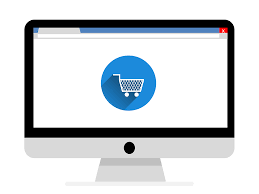Introduction
Building an e-commerce online store has become an increasingly popular way to earn money online. With the rise of digital entrepreneurship, individuals can create their own online stores and sell products to a global audience. In this article, we will guide you through the process of building your e-commerce online store and setting yourself up for online earning success.

1. Choose the Right E-commerce Platform
The first step in building your e-commerce online store is to select the right e-commerce platform. There are several platforms available, each with its own features and functionalities. Here are some popular options:
- Shopify: Shopify is a user-friendly platform that provides a comprehensive set of tools for building and managing an online store. It offers a range of customizable themes, secure payment options, and seamless integration with third-party apps.
- WooCommerce: If you prefer a more flexible and customizable solution, WooCommerce is a popular choice. It is a plugin for WordPress that allows you to transform your website into a fully functional e-commerce store. WooCommerce offers extensive customization options and integrates seamlessly with WordPress.
- BigCommerce: BigCommerce is a robust e-commerce platform that caters to businesses of all sizes. It offers a wide range of built-in features, including secure payment options, customizable themes, and advanced analytics.
- Magento: Magento is a powerful and scalable e-commerce platform, suitable for larger businesses with complex requirements. It offers a high level of customization, advanced features, and strong security measures.
Choose a platform that aligns with your business goals, budget, and technical expertise.
2. Set Up Your Online Store
Once you have chosen an e-commerce platform, it’s time to set up your online store. Here are the key steps involved:
a. Register a Domain Name: Choose a domain name that reflects your brand and is easy to remember. Register the domain through a reliable domain registrar.
b. Set Up Web Hosting: Select a reputable web hosting provider that offers reliable uptime, fast loading speeds, and excellent customer support. Install your chosen e-commerce platform on your hosting account.
c. Customize Your Store: Choose a visually appealing and user-friendly theme for your online store. Customize the design, layout, and colors to match your brand identity. Add essential pages such as the home page, product pages, about us page, contact page, and policies page.
d. Configure Payment Gateways: Integrate secure payment gateways that allow customers to make purchases on your website. Popular options include PayPal, Stripe, and Authorize.net. Ensure that the payment process is smooth and secure.
e. Set Up Product Categories: Organize your products into relevant categories to help customers navigate your store easily. Include clear product descriptions, images, and pricing information for each product.
f. Implement Inventory Management: If you are selling physical products, implement an inventory management system to track stock levels, manage product variations, and automate order fulfillment.
g. Optimize for Search Engines: Implement basic search engine optimization (SEO) techniques to improve your store’s visibility in search engine results. Research keywords, optimize product descriptions, and meta tags, and create a sitemap.
h. Test and Launch: Thoroughly test your online store to ensure that all features are functioning correctly. Test the purchasing process, payment gateways, and any additional functionalities. Once you are satisfied with the performance, launch your store.
3. Drive Traffic to Your Store
Having a well-designed online store is not enough; you also need to drive traffic to generate sales. Here are some effective strategies to attract visitors to your e-commerce store:
a. Content Marketing: Create valuable and engaging content related to your products or industry. Start a blog on your store’s website and share informative articles, tutorials, and product reviews. Optimize your content for search engines to increase organic traffic.
b. Social Media Marketing: Leverage the power of social media platforms to promote your products. Create engaging posts, run targeted advertisements, and collaborate with influencers in your niche to expand your reach.
c. Email Marketing: Build an email list by offering incentives such as discounts, exclusive content, or freebies. Send regular newsletters and promotional emails to your subscribers, showcasing your products and driving them to your online store.
d. Pay-Per-Click (PPC) Advertising: Consider running PPC campaigns on platforms like Google Ads or social media platforms to reach a wider audience. Set a budget, target relevant keywords or demographics, and create compelling ad copy to drive traffic to your store.
e. Search Engine Optimization (SEO): Continuously optimize your website for search engines. Conduct keyword research, optimize product descriptions, and build backlinks to improve your store’s visibility in search engine results.
4. Provide Excellent Customer Experience
To succeed in the competitive e-commerce landscape, providing an excellent customer experience is paramount. Here are some tips to enhance customer satisfaction and drive repeat business:
a. Responsive Design: Ensure that your online store is mobile-friendly and responsive across different devices. Customers should be able to navigate and make purchases easily on their smartphones or tablets.
b. Fast Loading Speeds: Optimize your website’s loading speed to minimize waiting times for customers. Compress images, use caching techniques, and choose a reliable hosting provider to ensure fast and seamless browsing.
c. Clear Product Information: Provide detailed and accurate product information, including high-quality images, product specifications, and customer reviews. Make it easy for customers to make informed purchasing decisions.
d. Seamless Checkout Process: Streamline the checkout process to minimize cart abandonment. Offer multiple payment options, guest checkout, and a progress indicator to guide customers through the purchasing process.
e. Customer Support: Offer prompt and helpful customer support through various channels such as live chat, email, or phone. Address customer queries and concerns efficiently to build trust and loyalty.
Conclusion
Building your e-commerce online store requires careful planning, attention to detail, and effective marketing strategies. By choosing the right e-commerce platform, setting up your store, driving traffic, and providing an exceptional customer experience, you can position yourself for online earning success. Remember to continuously evaluate and optimize your store to stay ahead in the dynamic e-commerce landscape.

